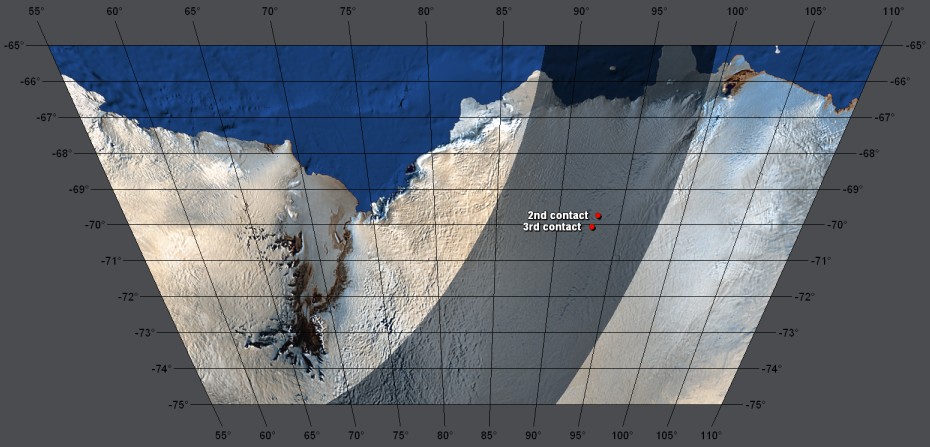  I was not very enthusiastic when I was asked by David Finlay to process his images taken aboard B 747 during the flight over Antarctica. I was skeptic about the quality of images taken though an airplane's window with (from the nowadays point of view) old generation digital camera and saved in JPEG format. The uniqueness of the image set made me to start the processing. The precise image alignment of 51 images by means of phase correlation was extremely time consuming - one image about 20 minutes of computer computing time. Another alignment problems were caused by the strange properties of image taken through thick airplane window. The worst problem was the correct composition of images in JPEG format captured with exposures in range from 1/250 s to 1/5 s. I had had no experience in processing of eclipse images in JPEG format. I created several new computer programs which turned out to dead ways. Finally, I solved the problem successfully. The result highly surprised me. The quantity of images and excellent observing conditions compensated the shortcomings and the result is highly over my expectations. The conditions in altitude over 10 km are very near to conditions in the space. So the next logical step was the compose the images taken from the airplane with SOHO images - especially with LASCO C2 and EIT. The results are fascinating because they enable to understand better the 3D coronal structure than eclipse images only.
Page versionfor slowInternet connection
Page versionfor slowInternet connection
Page versionfor slowInternet connection
Page versionfor slowInternet connection
Page versionfor slowInternet connection
Note: If any page needs more than 100 KB to be downloaded, there exists its lower quality version appointed for slow connection.

Page last update: 27.11.2019 |